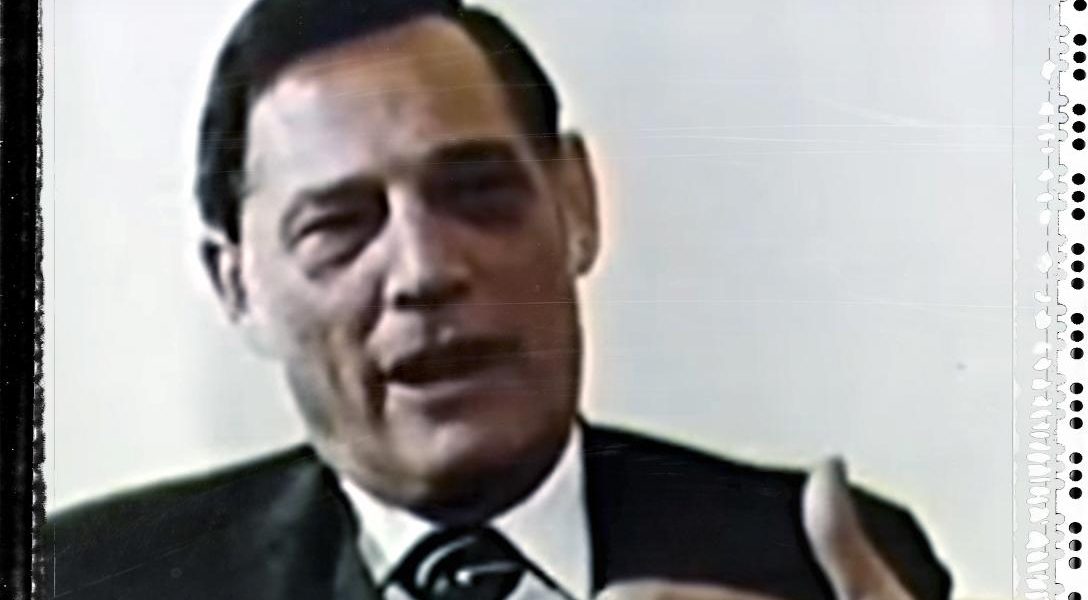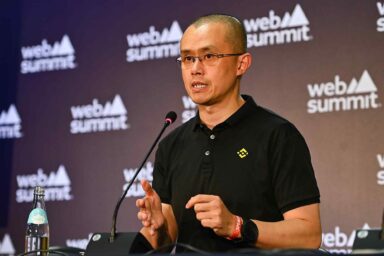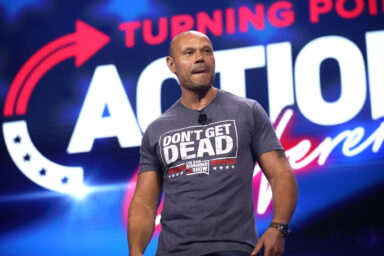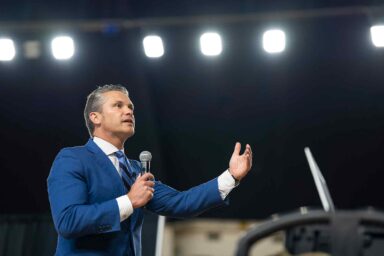This is a complex story, as fascinating as it is appalling. It is about how the CIA and FBI suppressed a major clue to the existence of a pre-JFK-assassination conspiracy. And about how alleged evidence of Lee Harvey Oswald in Mexico was manipulated and altered by elements in the CIA and their Mexican clients, the Dirección Federal de Seguridad (DFS).
When John F. Kennedy was assassinated on November 22, 1963, the United States lost more than its president. It lost its innocence. The subsequent investigations into the young president’s killing raised more questions than they answered — and caused Americans to lose faith in their government. Indeed, for many people in the US and across the world, the assassination marked the point at which their fundamental perceptions changed.
Just after the Warren Commission released its report on the assassination, the level of public trust in government was at 77 percent. A decade later it had plummeted to less than half that (36 percent).
Kennedy’s death and the circumstances surrounding it gave birth to a movement. This movement, composed of all kinds of people, is dedicated to investigating the story behind the story, to exposing the power networks hidden beneath surface events. These machinations have been dubbed “Deep Politics.” Those who study it believe there is much more to national and world events than what the public is told by government officials and evening newscasters — and, as you will see, Peter Dale Scott proves it.
On the occasion of the anniversary of Kennedy’s assassination, WhoWhatWhy is pleased to present excerpts from Chapter 2 of Scott’s latest work – Dallas ’63: The First Deep State Revolt Against the White House by Peter Dale Scott (Open Road Media, September, 2015).
For Part 1, please go here; Part 2 go here; Part 3 go here; Part 4 go here; Part 5 go here.
The Sources of the Stories and the ZR/RIFLE Assassination Project
In the pages to follow, I shall show how Staff D, the small CIA unit responsible for SIGINT (signals intelligence), and thus for electronic intercept operations, was also the unit which housed the CIA’s ZR/RIFLE assassination project. The Mexican DFS, which supplied the raw intercept data to the CIA in Mexico City, also overlapped in many ways with the Cubans and organized crime personnel picked for the CIA-Mafia anti-Castro assassination plots.[163]
It is possible that the special circumstances in Mexico City explain why the CIA’s generic assassination project, ZR/RIFLE, was housed within the Staff D’s intercept operations. (“ZR” normally prefixed the cryptonym for a intercept program.) In his hunt for killers, ZR/RIFLE chief William Harvey searched for individuals with criminal connections.[164] The Mexico City intercept operation against the Soviet Embassy was by far the largest and most important CIA intercept program anywhere in the world.[165]
And the DFS, the local intelligence service on which the CIA relied to man its listening posts, was probably the intelligence service with the profoundest links to the international drug traffic and to American organized crime.
Morales was a CIA officer and killer who “was well known as the Agency’s top assassin in Latin America.” He also openly described Kennedy’s conduct during the Bay of Pigs operation as “traición (betrayal).” According to a friend, Morales once ended an anti-Kennedy tirade with the words, “Well, we took care of that son of a bitch, didn’t we?”
For example, the brother-in-law of Luis Echeverría Alvarez, in 1963 the main liaison between Win Scott and the DFS, was Rubén Zuno Arce, who during Echeverría’s term as President of Mexico emerged as a top drug trafficker, eventually jailed for the murder of a DEA agent (Los Angeles Times, 3/25/93). Such direct family links between Mexican politicians and the drug traffic were unfortunately not uncommon.
Here is the gist of the DFS-drug-organized crime relationship, as set out in Deep Politics II:
“The DFS was involved in the LIENVOY intercept project and probably manned the listening posts. The DFS may have been assisted in this LIENVOY project by Richard Cain, an expert telephone tapper and adjunct to the CIA-Giancana [ZR/RIFLE] assassination connection, when he was in Mexico City in 1962 as a consultant to a Mexican Government agency. Richard Cain at the time was also part of that Dave Yaras-Lennie Patrick-Sam Giancana element of the Chicago mob with demonstrable links to Jack Ruby in 1963, and the HSCA speculated that Cain may have been part of the 1960–61 CIA-Mafia plots against Castro. [Cain’s CIA file, according to a later CIA memo, “reflects that … in 1963 … he became deeply involved in the President Kennedy assassination case.]” [166]
Since 1995 new releases from Cain’s FBI file have revealed that the file identified Cain not with the CIA or its Bay of Pigs Cuban Front the FRD, but as “a former United States Army Military Intelligence Officer. [167]
Unmistakably Staff D, the small secretive part of CIA in which the CIA-Mafia plots were housed, controlled the LIENVOY intercept intake inside the Mexico City CIA station (Anne Goodpasture, the responsible officer, was a member of Staff D). If Richard Cain trained and possibly helped recruit the Mexican LIENVOY monitors, then the CIA-DFS LIENVOY collaboration would present a matrix for connecting the CIA’s internal mishandling of Oswald information to the behavior of Ruby and other criminal elements in Dallas. It would also put the CIA-Mafia connection, through Staff D, in a position to feed to the CIA the false intercept linking a false Oswald to a suspected Soviet assassination expert (Kostikov), the intercept that became a major pretext for creating a Warren Commission to reach the less dangerous conclusion of a lone assassin.
David Phillips is the one man who seems to cover all aspects of the CIA-Oswald operation and cover-up in 1963. David Phillips even had one friend, Gordon McLendon, in common with Jack Ruby. McLendon, a sometime intelligence officer and Dallas owner of radio stations, had known Phillips since both men were in their teens.
There are contextual corroborations of this matrix. Both Ruby and the DFS had links to the Mexico-Chicago drug traffic, dating back to the 1940s. The DFS and the Mexican drug traffic became increasingly intertwined after 1963; the last two DFS chiefs were indicted, for smuggling and for murder; and the DFS itself was nominally closed down in the midst of Mexico’s 1985 drug scandals.[168]
To this we should add that Nicaraguan security forces, to whom Alvarado reported, were also deeply implicated under Somoza in the international drug traffic. Indeed military intelligence officers from Mexico to Panama in this period frequently exhibited the same pattern: involvement with each other, with the drug traffic, and with the CIA.[169]
Involvement with drug-trafficking was associated with other criminal activities, notably the smuggling of stolen US cars. Miguel Nazar Haro, a key DFS official who was also a CIA asset, handled requests for information with respect to Lee Harvey Oswald from the CIA, and eventually from the HSCA.[170]
Eventually Nazar Haro was indicted in California as part of a $30 million car theft ring.[171]
We have seen that Alvarado himself was part of this milieu. As CIA cables reveal, his reports on communists for Nicaraguan intelligence reached the CIA through his superiors. And the man to whom he reported, Gustavo Montiel of Nicaraguan Military Intelligence, was accused years later of being behind a “massive car theft ring” in the 1970s, which was run by another undercover informant against subversives, Norwin Meneses Canterero.[172]
Norwin Meneses became the key figure in a Contra-drug connection exposed by Gary Webb; CIA cables released in connection with Webb’s charges confirm that already in the Somoza era Meneses “was called the kingpin of narcotics traffickers in Nicaragua.”[173] Yet Meneses was able to move in and out of the United States with impunity in the Contra period. This immunity aroused suspicions in law enforcement circles that Meneses enjoyed CIA protection, just as undoubtedly the CIA intervened to remove Nazar Haro from the list of DFS agents indicted in California for car smuggling.[174]
It is highly unlikely that Scott and the other CIA station officers were unaware of the corruption with which they were dealing, but of which their cables mention nothing. Indeed Scott was a personal beneficiary, having accepted from his friend Miguel Nazar Haro a Cadillac for his personal use.[175]
New Revelations about Staff D, the DFS, and ZR/RIFLE
There are new revelations which strengthen the importance, in the ZR/RIFLE assassination nexus, of the Mexico City connection between Staff D and the DFS. The first is the importance of Mexico City to Staff D operations globally. As already noted, Mexico City was the site of the largest CIA intercept operations around the globe, as it afforded the CIA the opportunity to target one of the largest KGB outposts outside of the Soviet bloc.[176] Anne Goodpasture, who supervised the intercept operations in the Mexico City station, was a member of Staff D. She was also a co-author of the suspect cable naming Oswald and Kostikov, MEXI 6453, which I have characterized as evidence of a conspiracy.
As Chief of Covert Action in the Mexico City CIA station, and later as Chief of Cuban Operations, David Phillips oversaw these intercept operations. Simultaneously he held a second operational responsibility in the Special Affairs Staff, which in 1963 was coordinating all covert operations (including assassinations) against Castro. Some of these anti-Castro Cuban assets were based in Mexico City, and two of these in particular have been linked to the Kennedy assassination.
The first is Isidro (or Eusebio) Borja, the Mexican-born Cuban military chief of the exile group DRE, the Directorio Revolucionario Estudiantil. At the 1995 meeting in Nassau between Cuban and American students of the assassination, the Cubans reported that according to their files Borja was back in Mexico in 1962-63, as an asset of Phillips. This is quite credible, given Borja’s Mexican background, plus the DRE’s role in propaganda activities for the Bay of Pigs, for which Phillips was responsible. Borja in 1963 was one of the DRE Cubans being financed by Clare Boothe Luce (see Chapter 6).
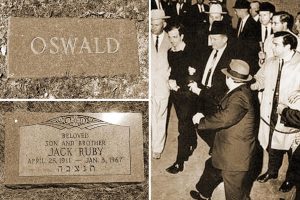
The Cubans, who had seen a photograph of Borja, also suggested that Borja might have been the alleged Mexican observed in the photographs of Oswald leafleting in New Orleans.[177] More relevant in my view is Borja’s responsibility for the DRE’s military arms procurement program in 1963, which brought the DRE to Dallas and possible contact (according to a book by Ray and Mary La Fontaine) with both Oswald and Jack Ruby.[178] Of particular interest is the fact that arms were being supplied by a captain of the US Army at Fort Hood (Capt. George Nonte), the army base in Texas which for some reason maintained an intelligence file both on Oswald and his alias “A.J. Hidell.” [179]
The second of Phillips’s anti-Castro Cuban assets was Bernardo de Torres, the assassination suspect referred to by Gaeton Fonzi as “Carlos.”[180] De Torres also developed close relationships with the DFS and has been accused of smuggling drugs out of Mexico with the knowledge of Nazar Haro. [181]
Bernardo de Torres has further been established as a contact of David Sanchez Morales.[182] Morales was a CIA officer and killer who “was well known as the Agency’s top assassin in Latin America.” He also openly described Kennedy’s conduct during the Bay of Pigs operation as “traición (betrayal).”[183] According to a friend, Morales once ended an anti-Kennedy tirade with the words, “Well, we took care of that son of a bitch, didn’t we?”[184]
Since the 1950s Morales’s career had closely paralleled that of his friend David Phillips: in Caracas, on the Guatemala operation, on the Bay of Pigs, and by 1963 at the JM/WAVE station. Two witnesses have stated that when Morales was stationed at JM/WAVE in Miami, and Phillips in Mexico City, “Morales would frequently travel from … Miami to Mexico City.”[185]
Two of Morales’s friends said that Morales spoke of having taken part in the killing of Che Guevara (1967), and also of “a leader of the government in Chile” (either General Schneider in 1970 or President Allende in 1973).[186] The former assassination at least would have been while under the direction of David Phillips, who was in charge of the CIA’s program to prevent Allende from assuming office.[187]
But in 1963 Morales was also meeting with the former principals of the ZR/RIFLE plots, William Harvey and John Rosselli, for purposes which are unexplained, and were possibly unauthorized.[188] Rosselli, an associate of Richard Cain from Chicago, had been the principal mob participant in the ZR/RIFLE project to assassinate Castro.[189] But by 1963 Harvey, after infuriating both Robert Kennedy and CIA Director McCone, had been taken off anti-Castro operations and reassigned as CIA Station Chief in Rome. The FBI had Rosselli under close observation in 1963; and allegedly overheard him and Harvey indulge themselves “by saying nasty things about Bobby Kennedy.”[190]
Another significant revelation is the presence in William Harvey’s ZR/RIFLE files of Harold Meltzer, who in the 1940s helped build up the Mafia’s Mexico City drug connection.[191] According to Richard Mahoney,
In 1975, the Church Committee catalogued Harvey’s ZR/RIFLE files and found the dossier of one Harold Meltzer, whom Harvey had described as “a resident of Los Angeles with a long criminal record.” What the ZR/RIFLE memo did not say was that Meltzer was a longtime collaborator and sometime shooter for Rosselli. Who, if not Rosselli, would have introduced him and vouched for him to Harvey? It was yet another indication that the alliance between Harvey and Rosselli went far deeper than the one-shot joint venture to kill Castro. What sealed their relationship was a venomous hatred of the Kennedys, and their collaboration in the sensitive art of murder. [192]
And what Mahoney does not mention is that both FBN and FBI files linked the Mexican drug connection to Jack Ruby. Ruby’s contacts with Mexican drugs are first reported in 1948, but seem to have been reactivated in 1963. At least one old collaborator of Meltzer in the Mexican drug traffic, Paul Roland Jones, contacted Ruby in Dallas just before the assassination.[193]
It is clear that throughout 1963, members like David Morales of the CIA’s Special Affairs Staff, designated to co-ordinate operations against Castro (including new assassination projects), maintained contact with Cuban and other enemies of the Kennedys. What has become clear only recently is that David Phillips, when he acquired his second role in the fall of 1963 as Chief of Cuban Operations in Mexico City, now answered in this capacity to the Special Affairs Staff.[194] Phillips was in effect rejoining the officers he had worked with on the Bay of Pigs in 1961, at which time he had been responsible for propaganda operations against the newly-created Fair Play for Cuba Committee.[195]
From about October 1 to October 9 Phillips made a quick trip, authorized by the Special Affairs Staff, to Washington and then Miami.[196] On October 1 the Mexico City CIA station also sent a cable directing that a diplomatic pouch, sent on October 1 to Washington, should be held in the registry until picked up by “Michael C. Choaden” (i.e. Phillips) presently TDY (temporary duty) HQS.”[197][198] The date October 1 catches our eye, inasmuch as it is the date of the alleged Oswald-Kostikov intercept. One is also struck by Phillips’s presence in the Miami JMWAVE station from October 7–9. There are reports that Rosselli, who had good standing in the JMWAVE station, met on two occasions in Miami in early October with Jack Ruby.[199]
Phillips’s trip coincides curiously with a significant change in the contents and handling of Oswald’s 201 file. Up to late September 1963, incoming documents about Oswald had been referred to the CI/OPS and SR/CI (Soviet Russia/Counterintelligence) desks.[200] But there was a new addressee for the next Oswald document, an FBI Report of September 24 from New Orleans about Oswald’s arrest in August 9 after distributing Fair Play for Cuba leaflets. This was “Austin Horn” of SAS/CI (replacing the usual SR/CI), whose name appears next to the date stamp “8 Oct 1963.”
This exclusion of SR/CI, coupled with the initial exclusion of the report (entitled “Lee Harvey Oswald”) from Oswald’s 201 file, helps explain how an unwitting member of the SR/CI staff (Stephan Roll) could clear an outgoing cable that stated, falsely, that
“Latest HDQS info [on Oswald] was ODACID [State Department] report dated May 1962 [!] saying ODACID had determined Oswald is still US citizen and both he and his Soviet wife have exit permits and Dept State had given approval for their travel with their infant child to USA.” [201]
Of the six officers responsible for drafting and signing this important cable, only one, Jane Roman of CI/LS (Counterintelligence/Liaison), had seen the incoming FBI report of September 24 that disproved their text.
David Phillips is the one man who seems to cover all aspects of the CIA-Oswald operation and cover-up in 1963. David Phillips even had one friend, Gordon McLendon, in common with Jack Ruby. McLendon, a sometime intelligence officer and Dallas owner of radio stations, had known Phillips since both men were in their teens. (The two men would in the 1970s join in forming the Association of Former Intelligence Officers.)[202] McLendon was close to two other wealthy men in Dallas who have attracted the attention of JFK researchers, Clint Murchison and Bedford Wynne.[203]
What is not yet known is why McLendon, whom Ruby described as one of his six closest friends, embarked on a sudden and surprising trip with his family to Mexico City in the fall of 1963.[204]
Conclusion: The CIA, Drugs, and History
By looking closely at the Mexico Oswald stories, and particularly at their genesis in the corrupt drug-linked Mexican DFS, we have learnt more about the CIA role in covering up important clues about the Kennedy assassination. We have seen also that the CIA drew on the resources of intelligence agencies whose power was grounded in the local drug traffic, not just in Mexico, but also in Nicaragua.
Later in this book, we shall see the illicit drug traffic as a shadow nexus behind other figures who figure in the story of the John F. Kennedy assassination, such as Jack Ruby, Sam Giancana, John Roselli, John Martino, and Richard Cain. It will I think prove relevant that key CIA figures, notably William Harvey and James Angleton, had direct or indirect links to just these elements in organized crime.[205]
This situation, an interaction between what is documented and what is not, also forces us to enlarge our thinking about history. As we have seen, history is defined in dictionary terms as a narrative or record of what is known. A successful assassination plot, by contrast, represents an interruption of this record by the unrecorded, the unknown. Thus the defense of succeeding political legitimacy becomes indistinguishable from a defense of the integrity and dominance of the public historical record. This defense propels people to trivialize the assassination as an accident, the work of a “lone nut.”
Those of us who genuinely wish to see overt, rational forces prevail in the world must reject such a superficial and spurious defense of our institutions. The ideal embraced by our society, that it be based on truth and openness, is not a cynical cliché, but a real condition for our institutional health. The pursuit of leads hinted at in this essay may seem frustratingly difficult, esoteric, and above all slow. But to abandon this pursuit is to break faith with the American dream, indeed the dream of enlightenment itself.
For Part 1, please go here; Part 2 go here; Part 3 go here; Part 4 go here; Part 5 go here.
References
[163] Scott, Deep Politics II, 130-36; Peter Dale Scott, American War Machine, 44-57.
[164] Church Committee, Alleged Assassination Plots Involving Foreign Leaders; Interim Report, Senate, 94th Cong., 1st Sess., Report No 94-465, 182.
[165] “Scelso” [Whitten] Deposition to HSCA, 5/16/78, NARA #180-10131-10330, 1-140: “the performance of the Mexico City support apparatus, as we call surveillance, photo-surveillance, phone taps and so forth, was unequalled in the world. There is nothing like it anyplace else in the world.”
[166] Deep Politics II, 117, 130-36.
[167] FBI HQ 105-93264-3, NARA #124-90059-10087 SAC Chicago to Director, 2-17-61: “CIA on 2-10-61 advised that subject is not connected with CIA or FRD;” FBI HQ 105-93264-3, NARA #124-90059-10111: FBI SAC Chicago LHM of 11/02/60, 3 (“Army Military Intelligence officer”).
[168] Scott, American War Machine, 49-57.
[169] Peter Dale Scott and Jonathan Marshall, Cocaine Politics: Drugs, Armies, and the CIA in Central America (Berkeley: University of California Press, 1998), 65 and passim.
[170] E.g. Attachment to CIA Cable IN 94192 of 20 June 1967, NARA #104-10408-10436.
[171] Deep Politics II, 135; Washington Post, March 28, 1982 ($30 million).
[172] Gary Webb, Dark Alliance, 54-56. Cf. CIA Memo to Papich of 12/12/63; NARA #104-10018-10043 (Alvarado-Montiel).
[173] “CIA Report on Contras and Cocaine” (Hitz Report), I, para 100; cf. Volume II, 282 353 355 652-4 659; Scott, Drugs, Contras, and the CIA, 19.
[174] Webb, Dark Alliance, 200-05 and passim (Meneses-CIA); Scott and Marshall, Cocaine Politics, 36 (Nazar Haro protected).
[175] Scott, Deep Politics, 105.
[176] David Atlee Phillips, Night Watch, 113-14.
[177] December 1995 Nassau Conference, Proceedings; https://cuban-exile.com/doc_026-050/doc0027-3.htm, https://cuban-exile.com/doc_026-050/doc0027-4.htm. Photo is Warren Commission Bringuier Exhibit No. 1, 19 WH 173.
[178] Ray and Mary La Fontaine, Oswald Talked: The New Evidence in the JFK Assassination (Gretna, LA: Pelican Publishing, 1996), 288-99, etc. Cf. the DRE arms story in Chapter 5.
[179] Ray and Mary La Fontaine, Oswald Talked, 277, 283-88, etc.
[180] Fonzi, The Last Investigation, 232-239, etc.
[181] Scott and Marshall, Cocaine Politics, 35; Fonzi, The Last Investigation 232-39.
[182] Noel Twyman, Bloody Treason (Rancho Santa Fe, CA: Laurel Pub., 1997), 700-02 (Bernardo de Torres-Morales).
[183] Mahoney, Sons & Brothers, 135.
[184] Fonzi, The Last Investigation, 390.
[185] Twyman, Bloody Treason, 451.
[186] Twyman, Bloody Treason, 454-57.
[187] John Ranelagh, The Agency: The rise and decline of the CIA (New York: Simon and Schuster, 1986), 515-20. Phillips confirms the assignment in his autobiography (The Night Watch, 220-21); he also describes “El Indio” (Morales) as someone whom he met on the Guatemalan operation, “but was to work with in other operations over the years” (p. 49).
[188] Twyman, Bloody Treason, 438-40 (Harvey-Morales-Rosselli).
[189] The CIA Inspector-General’s Report on the subject said that “after Harvey took over the Castro [assassination] operation, he ran it as one aspect of ZR/RIFLE (CIA Inspector General’s Report, 40-41; Church Committee, Interim Report, 182). Harvey thus took over the CIA contact with Rosselli “as part of Project ZR/RIFLE” (Interim Report, 188).
[190] Warren Hinckle and William Turner, Deadly Secrets (New York: Thunder’s Mouth Press, 1992), 213.
[191] Scott, Deep Politics and the Death of JFK, 141-45.
[192] Mahoney, Sons & Brothers, 269.
[193] Scott, Deep Politics, 141-43. Among the anonymous reports received by the Dallas Police Department after the assassination was one linking Ruby to an international ring smuggling cars and narcotics. (I am grateful to Michael Parks for this information.)
[194] Assassination Records Review Board (ARRB), Deposition of Anne Lorene Goodpasture, December 1995, p.67: “we were all advised that he was head of the [Cuban] task force.” Task Force W, which directed Operation Mongoose against Castro in 1962, was renamed the Special Affairs Staff in early 1963.
[195] Newman, Oswald and the CIA, 236-43.
[196] CIA Cable DIR 73214 of October 4, 1963: “Mr David Phillips, newly appointed Chief PBRUMEN [Cuba] Ops in MEXI will arrive 7 October EAL FL 655 for two days consultations WAVE” (NARA #104-10046-10003). WAVE was the SAS field station in Miami.
[197] Almost certainly there could have been nothing relevant to the October 1 intercept in a pouch the same day in Washington. However there could have been materials pertinent to the alleged but missing intercepts of Oswald in the Cuban Embassy.
[198] CIA Cable MEXI 6344 0f October 1, 1963, NARA #104-10092-10212. The full text of the cable is as follows: “Bulk materials under TN 251905, Pouch number 4083, pouched one October to be held in registry until picked up by Michael C. Choaden presently TDY HQS.”
[199] Scott, Deep Politics, 117-18.
[200] NARA #104-10015-10045, cover sheet to FBI Hosty Report of 9/10/63; in Newman, Oswald and the CIA, 501. William Potocki of CI/OPS initialed this cover sheet on September 25, the day that the Warren Report (WR 413) alleges that “Oswald left [New Orleans] for Mexico City”.
[201] DIR 74830 of 10 Oct 1963, NARA #104-10015-10048, p. 2. The CIA tried to conceal this trickery from the Warren Commission by giving the September 24 FBI memo a forged FBI transmittal slip, dated “November 8,” and burying the memo in the November section of the 201 file (Warren Commission Document 692). But the CIA cover sheet (not seen by the Warren Commission) shows clearly that the FBI memo was received in the CIA on October 3, and seen by Jane Roman on October 4. The forged FBI transmittal slip was re-released by the CIA in May 1992, and was published in the Sckolnick edition of this release (Lewis B, Sckolnick, Lee Harvey Oswald: CIA Pre-Assassination File, Facsimile Edition [Leverett, MA: Rector Press, 1993], 112). It has disappeared from the CIA’s 1993 release of the same 201 file, but can be seen in Newman’s book Oswald and the CIA on page 503. The nature of the forgery is this: the CIA took a genuine FBI transmittal slip dated “Nov 8 1963” and added to it the CIA registry number (“DBA-52355”) of the 9/24/63 FBI. The cover sheet to the same document (NARA #104-10015-10046; Newman, Oswald and the CIA, 502) has a date stamp showing that it was received by CIA on October 3.
[202] See Chapter 4.
[203] Scott, Deep Politics, 206-18, 226-27, 288-90, etc. Gerald Patrick Hemming, an ex-Marine Soldier of fortune involved with anti-Castro Cubans, has hinted that both Murchison and McLendon were present at a July 1963 meeting in the Dallas Petroleum Club, at which Hemming declined an alleged proposal to assassinate President Kennedy (Twyman, Bloody Treason, 699, 745). I feel duty-bound to transmit this story, but see no good reason to believe it.
[204] 20 WH 39 (Ruby). The information about the McLendon family trip I owe to Mary Ferrell, a close friend of some of McLendon’s children.
[205] For William Harvey, see the Rosselli-Meltzer connection noted above. Angleton spoke at some length about Harvey-Rosselli contacts in his depositions by the HSCA (p. 87). But John “Scelso” [Whitten], Chief of the CIA’s Western Hemisphere/Mexico Branch, also testified to the HSCA about Angleton’s “ties to organized crime,” and specifically about protection he supplied against RFK’s investigation of the skim from Las Vegas casinos (organized principally by Meltzer’s patron Meyer Lansky). See HSCA, Subcommittee Executive Session, May 16, 1978, Testimony of John Scelso, NARA #180-10131-10330, 167-69.
Related frontpage panorama photo credit: Dallas ’63: The First Deep State Revolt Against the White House (Open Road Media / Amazon), Flag of the Soviet Union (СССР / Wikimedia), Assassination Records Review Board (ARCHIVE.GOV), Tiger Head (Ross Elliott / Flickr – CC BY 2.0), Peter Dale Scott (PETERDALESCOTT.NET), Flag of Cuba (Madden / Wikimedia), KGB Emblem (Adapted from C records / Wikimedia), Jack Ruby mugshot (Dallas Police Department / Wikimedia), Lee Harvey Oswald mugshot (ARCHIVES.GOV), David Atlee Phillips (Shane McBryde / YouTube).
